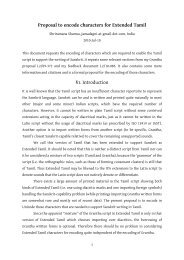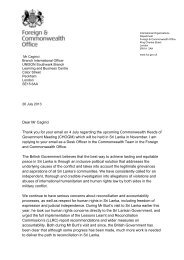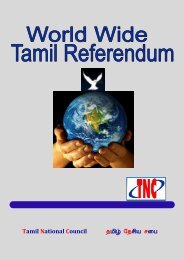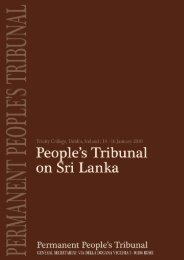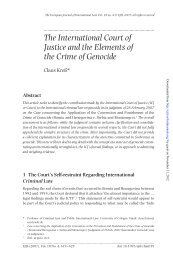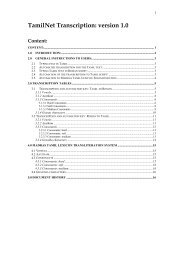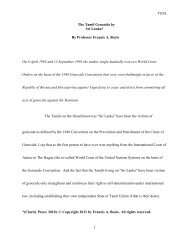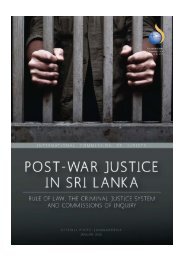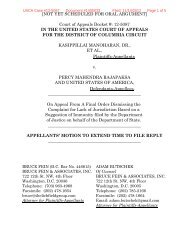Refugees and forced displacement - United Nations University
Refugees and forced displacement - United Nations University
Refugees and forced displacement - United Nations University
You also want an ePaper? Increase the reach of your titles
YUMPU automatically turns print PDFs into web optimized ePapers that Google loves.
REFUGEES, SECURITY, AND VULNERABILITY 11People of Arab origin <strong>and</strong> Muslims are particularly vulnerable to discrimination.There have been concerns that anti-terrorist <strong>and</strong> securitylegislation privileges anti-terrorist concerns over the rights of genuineasylum seekers. UNHCR has expressed concern that ‘‘bona-fide asylumseekers may be victimized as a result of public prejudice <strong>and</strong>unduly restrictive legislation or administrative measures.’’12 TheUNHCR’s concerns cover racism <strong>and</strong> xenophobia; the tendency tolink asylum seekers <strong>and</strong> refugees to crime <strong>and</strong> terrorism; restrictedadmission <strong>and</strong> access to refugee status determination; exclusion basedon religion, ethnicity, nationality, or political affiliation; deterioratingtreatment of asylum seekers; withdrawal of refugee status; deportation<strong>and</strong> extradition; <strong>and</strong> increasing obstacles to resettlement. It is importantto note that restrictive <strong>and</strong> discriminatory asylum policies are notconfined to ‘‘Western’’ or European states.13The evolving security discourse <strong>and</strong> refugeesInternational security has traditionally been defined, ultimately, as themilitary defence of territory. The context is traditionally seen as ananarchic state system whose chief characteristic is a perennial competitionfor security based upon (primarily military) power. In internationalrelations theory, this is ‘‘structural realism’’: although unit-level changesmay occur inside states, the system remains a self-help, anarchic, hierarchicalarena that conditions or even determines the behaviour <strong>and</strong> attitudesof the units.14 National security therefore is the imperative ofdefending territory against, <strong>and</strong> deterring, ‘‘external’’ military threats.A sense of ‘‘security dilemma’’ – for example during the Cold War –provides a pretext for the extremes of the narrow national security paradigm.Mainstream structural realism is a systemic, structure-dominantschool. Therefore, developments such as democratization within states,the growing multiplicity of transnational actors, economic interdependence,<strong>and</strong> the growth <strong>and</strong> thickening of international institutionalizationare viewed as not changing the basic nature of the system: ‘‘the structureof international politics is not transformed by changes internal to states,however widespread the changes may be.’’15 Interests, identities, <strong>and</strong> theneed for relative gains are determined by structure. Agency is secondary.In the context of this structural realist analytical security framework,refugees are almost invisible: they are an inevitable <strong>and</strong> peripheralconsequence – although not a cause – of conflict, insecurity, <strong>and</strong> instability.The realist model focuses mainly on conflict amongst states <strong>and</strong>the structural determinants of conflict in a state-centric environment.Accordingly, human <strong>displacement</strong> is seen as part of a ‘‘humanitarian’’



